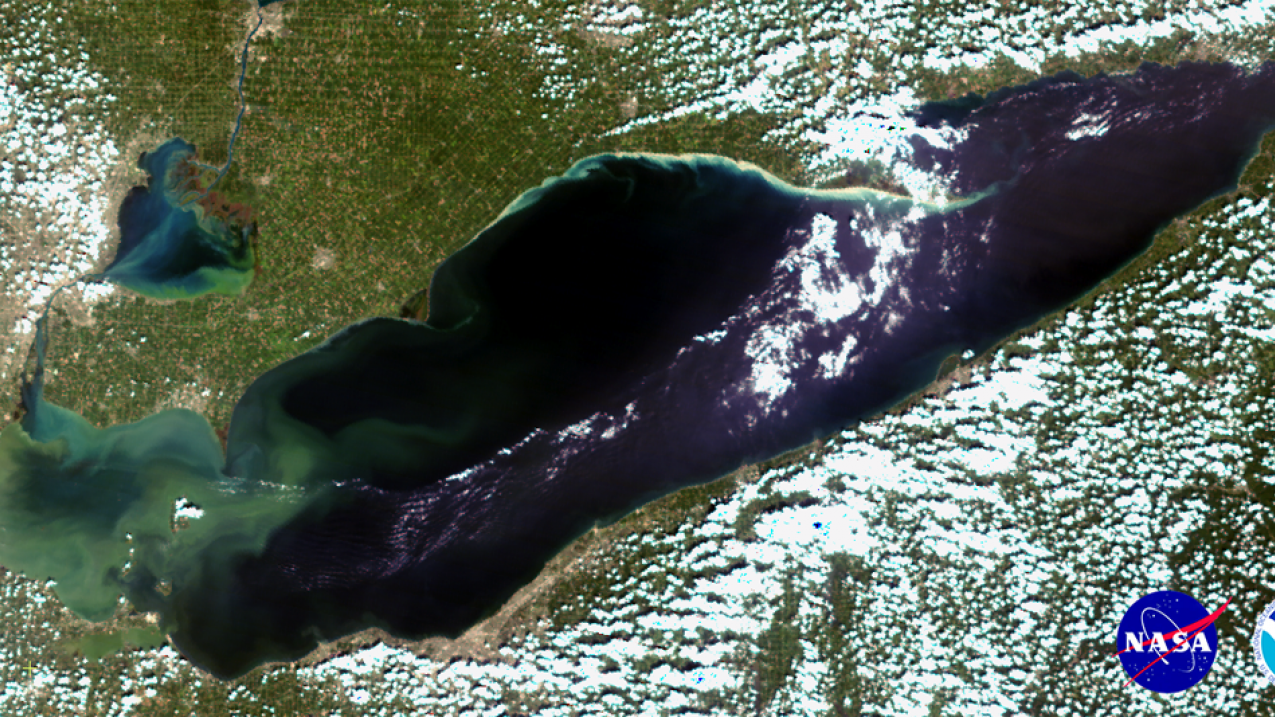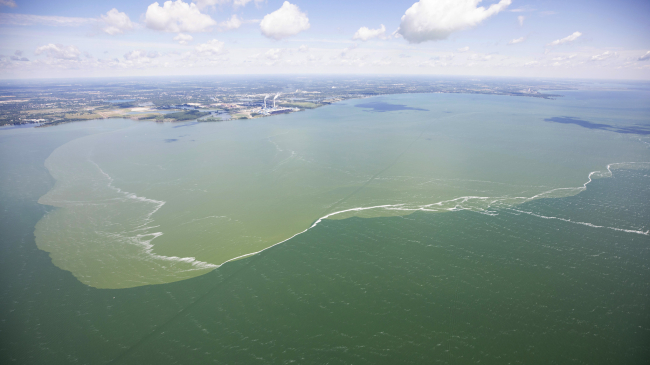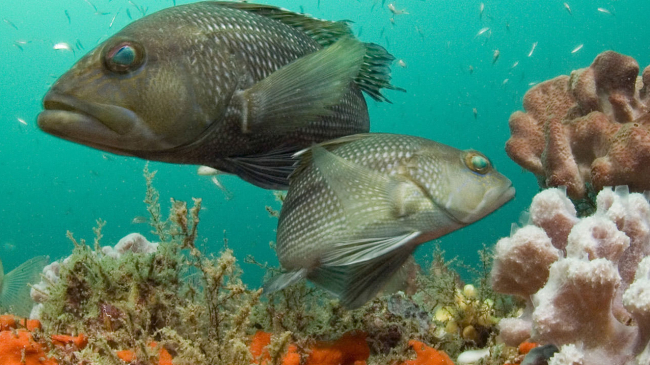Multiyear awards to focus on bloom prevention and shellfish toxicity in seven states
NOAA has announced nine research grants will go to organizations around the country seeking to better understand and measure the toxicity of harmful algal blooms, known as HABs.

A satellite view of Lake Erie in 2014, showing that year's algal bloom in the western basin. 2017's bloom is expected to resemble 2014's. (Image credit: NOAA)




